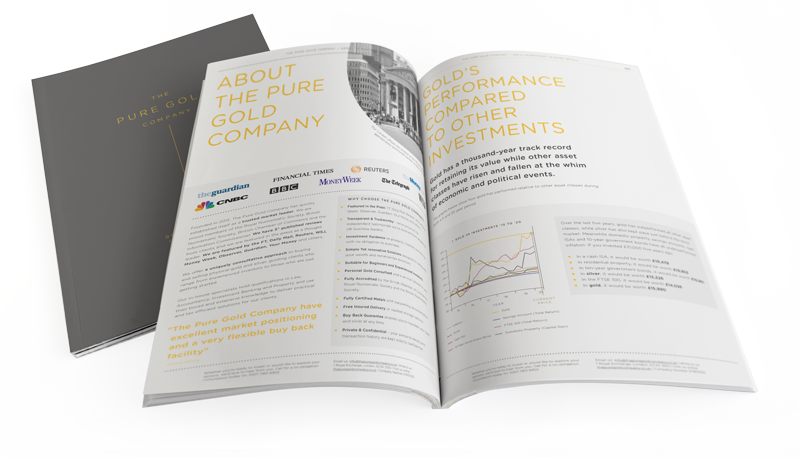The value of gold, and therefore the value of your investment in it, is determined by the balance of supply and demand. Gold is rare and supply is limited, which is what makes it valuable. But equally, someone has to buy what little there is in order for the price to continue to rise. This demand side of the equation is fuelled by four key drivers – central banks, investors, technology and jewellery. So, who is buying now? What are the trends over the longer term? And can we expect demand from these main sources to continue to drive the price higher?
Current trends
While demand trends fluctuate throughout the year, the long-term direction of travel is up. Gold has held its value as a store of wealth for centuries, underpinned by most of the same drivers as today.
The most recent data shows that the gold price in the second quarter averaged $1,976, a record high, and 6% higher compared to the same period last year, according to the World Gold Council. Demand trends collated by the trade body for the second quarter of 2023 showed a small (2%) fall in demand from gold traded on exchanges, but an overall 7% rise in demand when ‘over the counter’ deals (which are trades that happen directly between two parties rather than on a platform or exchange) are included.
Total demand grew to 1,255 tonnes of the precious metal in the three months between April and June, with investment demand up year on year, while jewellery demand stayed relatively static and central bank demand fell after a very strong year in 2022.
Central banks
The central banks of countries all around the world buy and store gold. They do this as part of their financial reserves, which are assets that countries can use to pay loans or debts and support the financial system. Without these back-up reserves, people can lose confidence in a country’s financial system which could be catastrophic for the economy. Most reserves are held in foreign currency, the most popular being the US dollar, but gold makes up a variable but substantial proportion of reserves. For example the European Central Bank holds around 35% of its EUR82 billion of reserve assets in gold.
2022 was a high-water mark for central bank gold buying. Countries bought 1,136 tonnes of gold in 2022, the highest level since records began in the 1950s, and also the thirteenth consecutive year of net purchases. Before 2010, central banks had been selling more than they had been buying, but this trend switched as countries turned to gold to shore up their economies after the global financial crisis
Many of them were emerging economies. If a central bank holds a lot of gold reserves, the economy and currency is perceived as more stable because they have the assets to back up any purchases or debt.
Of the central bank gold in circulation, currently, the USA has the largest gold reserves in the world, stockpiling 8,133 tonnes of gold as of July 2023 with Germany in a distant second place with 3,362 tonnes.
This hasn’t changed a lot recently, whereas emerging economies have been doing a lot more buying. The Russian Federation holds around 2,330 tonnes today, up from just 422 tonnes in 2000, and China has increased its gold reserves from 395 tonnes in 2000 to 2,092 tonnes, according to the World Gold Council.
In its most recent quarterly gold trend report, The World Gold Council said Central Banks and other institutions bought 102.9 tonnes of gold in the second quarter, which along with the 284 tonnes bought in the first quarter made for record-breaking first-half demand.
While around 70% of central banks plan to keep their reserves the same, a quarter expect to increase their holdings in the next 12 months, according to the annual World Gold Council central bank survey.
Investment gold
Private and institutional investors buy gold for a myriad of reasons, chief among which is its long-term store of value. Gold’s tangible and immutable qualities mean it has been a store of wealth for centuries even while there are short-term fluctuations in price. It is viewed as a safe-haven asset, and its value tends to rise when other assets are falling. This means gold is a very good way to diversify and protect your investments from market volatility. Physical gold bars and coins have the added advantage of being VAT and Capital Gains Tax-free depending on individual circumstances.
In 2022, investment gold demand made up around 24% of global demand for the precious metal. This includes gold coins and bars that private and institutional investors buy, and the gold used to back ETFs (Exchange-Traded Funds), which is a way to invest in gold without having to own it directly.
ETFs are a pooled fund, usually backed by physical gold, that you can buy ‘shares’ in. A gold-backed ETF tracks the price of gold, rising and falling as the value of the metal goes up or down. ETFs need to own the gold underpinning the fund, so the fund managers buy physical gold as more people invest in them, and sell it when demand for ETFs falls.
While ETF demand fell in the second quarter, meaning the funds sold more gold than they bought, total investment gold demand rose 20% because of increased demand for bars and coins compared to the same period last year. Physical gold coin and bar investments accounted for 277.5 tonnes of the 1,255.2 tonnes of total demand.
Jewellery Gold jewellery has been revered for centuries for its beauty and radiance, its low reactivity (meaning it doesn’t rust or corrode), and its malleability which allows it to be moulded into


